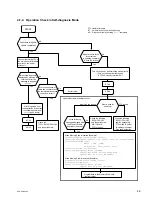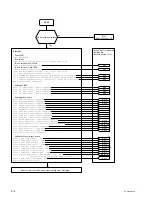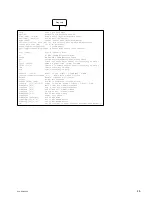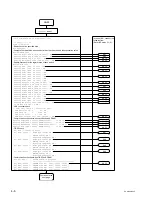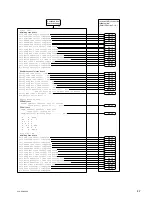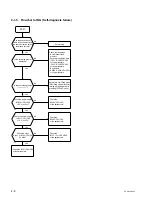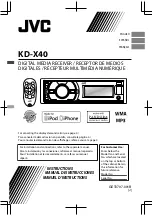
PCS-G50/G50P
3-1
Section 3
Operation Description
3-1. Operation Description
3-1-1. Interface Between Equipment
Interface between each equipment is explained below.
(a) Camera unit (PCSA-CG70/CG70P) — Remote
commander (PCS-RG70)
The SIRCS signal transmitted from the remote commander
is received in the photosensor on the front panel of the
camera unit.
(b) Communication terminal (PCS-PG50/PG50P)
— Camera unit (PCSA-CG70/CG70P): D-sub,
15-pin (Female) — Mini 23-pin (Female)
Power:
A power of
+
19.5 V (DC) that is supplied from an AC
adapter to the PCS-PG50/PG50P is sent to the camera unit
through the switch and fuse in PCS-PG50/PG50P.
Camera video signal:
The image read using the camera unit is input to the PCS-
PG50/PG50P using the YC video signal.
Infrared video signal:
The video signal modulated to infrared rays from an
optional document stand (PCS-DS150) is demodulated
after it is photo-sensed by the camera unit, and it is input to
the PCS-PG50/PG50P using a composite video signal.
VISCA signal:
The setting or operation of the camera unit is controlled
from the PCS-PG50/PG50P using a serial signal.
The status of the camera unit is output to the PCS-PG50/
PG50P.
SIRCS signal:
The SIRCS signal received in the photosensor of the
camera unit is output to the PCS-PG50/PG50P without the
carrier.
STANDBY signal:
The STANDBY signal controlled by the PCS-PG50/
PG50P is the POWER CONTROL signal of the camera
unit (not including a camera module (EVI-10EQ)).
The SIRCS receiver circuit of the camera unit, however, is
always power-supplied irrespective of the STANDBY
signal.
L (GND level): POWER ON
H (
+
5 V DC):
POWER OFF
(c) Communication terminal (PCS-PG50/PG50P)
— Microphone: ø3.5 mm mini-stereo phone
jack
Power:
A power of approximately
+
2.9 V (DC) is supplied from
the PCS-PG50/PG50P to the microphone.
Audio signal:
An audio signal of
_
33 dBs is input to the PCS-PG50/
PG50P.
(d) Communication terminal (PCS-PG50/PG50P)
— ISDN unit: AV-Multi, 14-pin
Power:
A power of
+
19.5 V (DC) that is supplied from an AC
adapter to the PCS-PG50/PG50P is sent to the ISDN unit
through a switch and fuse.
SCIF signal:
The SCIF signal is an asynchronous serial signal, having
FIFO, which is used for the communication between the
hosts of the PCS-PG50/PG50P and the ISDN unit.
It is used for transmission (SCIF-TX) and reception (SCIF-
RX).
DCLK signal:
The DCLK signal is a data clock signal of 2.048 MHz
from the ISDN unit to the PCS-PG50/PG50P, that is, an
LVDS differential signal (DCLK
±
).
FS signal:
The FS signal is a frame sync signal of 8 kHz from the
ISDN unit to the PCS-PG50/PG50P, that is, an LVDS
differential signal (FS
±
).
DX signal:
The DX signal is a transmission data signal of 2.048 MHz
from the PCS-PG50/PG50P to the ISDN unit, that is, an
LVDS differential signal (DX
±
).
DR signal:
The DR signal is a reception data signal of 2.048 MHz
from the ISDN unit to the PCS-PG50/PG50P, that is, an
LVDS differential signal (DR
±
).
Summary of Contents for Ipels PCS-G50
Page 6: ......
Page 16: ......
Page 26: ......
Page 34: ......
Page 170: ......
Page 186: ......
Page 191: ...PCS G50 G50P 8 7 8 7 CPU 382 B SIDE SUFFIX 12 13 A B C D 1 2 3 4 CPU 382 CPU 382 ...
Page 198: ......
Page 199: ......
Page 200: ...Printed in Japan Sony Corporation 2005 6 22 2005 PCS G50 UC PCS G50P CE E 9 968 181 01 ...

























